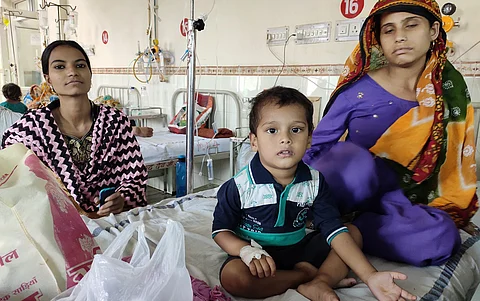

Anas is all of nine years. He lives in Jaipur, the storied capital of Rajasthan. But Anas does not have a happy childhood like many children of his age. He suffers from bronchitis.
It was back in 2019 when Anas was around 4 years old, that he had complained of breathlessness. He was admitted to hospital. The doctors who treated him believe that there was only one reason behind his ailment: the foul air that envelopes Jaipur like the rest of north India every year as autumn transitions to winter.
As the winter of 2024-2025 begins, parents of millions of children like Anas across north India, particularly its heavily populated Indo-Gangetic Plain (IGP) mull over what is an annual worry: How to prevent the torture their child has to go through at this time of year.
Over the last one decade, the problem has only grown more serious, with newer studies presenting deadlier statistics.
In December 2018, a year before Anas became ill, the India State-Level Disease Burden Initiative, was published in The Lancet Planetary Health journal.
It found that one out of every eight deaths in India were attributable to air pollution and the average life expectancy in the country would have been 1.7 years higher if the air pollution level was less than the minimal level causing health loss.
The next year, when Anas became ill and was admitted to hospital, an analysis by the Energy Policy Institute at the University of Chicago (EPIC) found that the average life expectancy of those living in the IGP of north India is 7 years shorter than those in other regions of the country.
Two years later, in 2022, another analysis by the University of Chicago showed that worsening air pollution is robbing a decade of the life expectancy of those living in Delhi.
It is not as if the culprits that have caused Anas and millions of children and adults to suffer have not been located.
Over the years, studies have implicated a number of sources due to which Delhi and the region’s air goes foul every autumn and winter.
First and foremost among them is the paddy stubble being burnt by farmers in neighbouring states like Punjab, Haryana and (western) Uttar Pradesh. The stubble has to be removed so that the fields can be prepared for growing wheat, a legacy of the Green Revolution which made the paddy-wheat cycle the norm across much of the north Indian plains.
Since burning is the easiest way to remove stubble, farmers do exactly that. Over the past decade, several schemes have been launched by the government to wean farmers away from the paddy-wheat cycle, quicken the harvesting of paddy as well as provide farm implements to ease the removal of stubble. None have worked.
Other sources of pollutants besides the stubble fire smoke include construction and building waste, biomass burning, thermal power plants, dust and vehicular pollution.
A recent writeup on Down To Earth noted that as per data from October 12 to 21, 2024, over half of Delhi’s PM2.5 pollution comes from vehicles. Delhi's roads are choked with over a million registered vehicles and this number continues to grow each year.
The wind movement during this time slows down so that the pollutants remain suspended in the air, making it lethal and noxious for the residents. They include nitrogen dioxide, nitric oxide, sulphur dioxide and others.
But over the past decade, political leaders at the state and national level have only traded accusations against each other and the political slugfest has not yielded any solutions.
The situation is so grim now that Delhi even has the country’s first Outpatient Department dedicated solely to victims of pollution.
Meanwhile, for young patients like Anas, life is a cross which they have to continue to bear, owing to the folly of others.